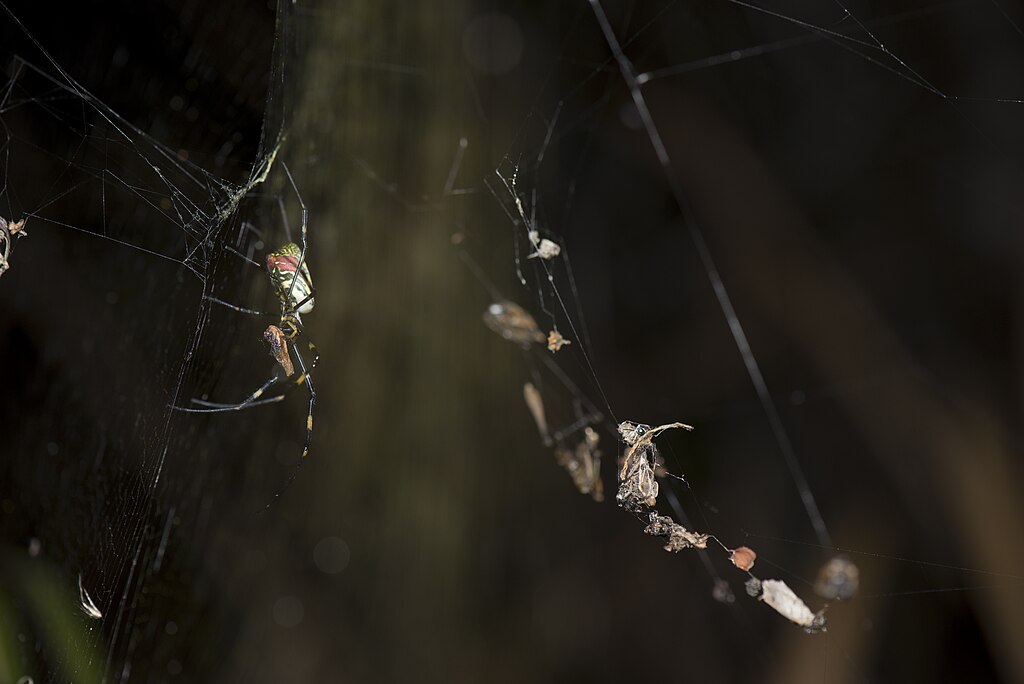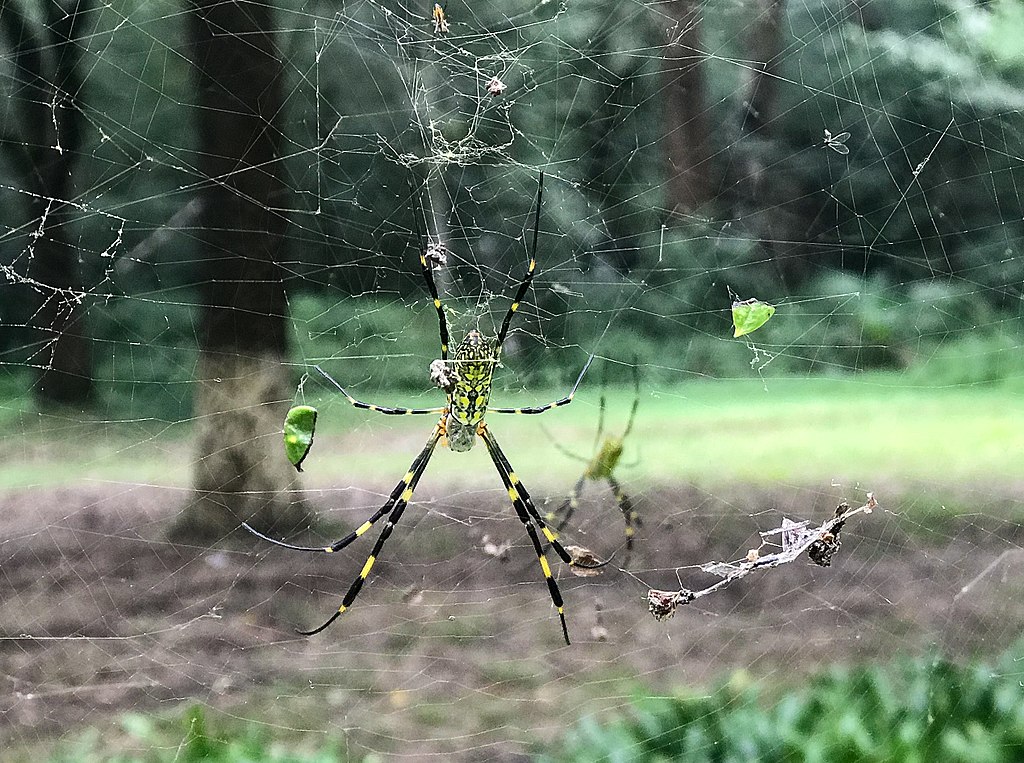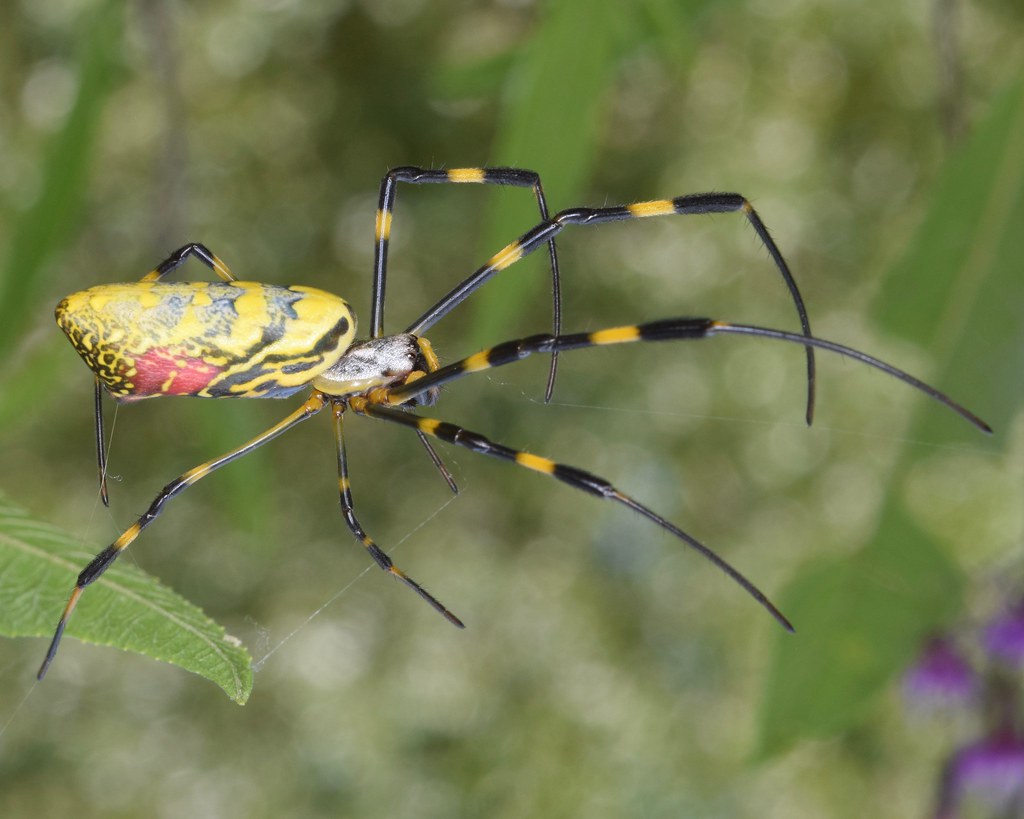Picture this: you’re walking through your backyard and spot a large, colorful spider dangling from a web that seems impossibly vast. Your heart skips a beat as you notice the distinctive yellow and black markings. Is this the infamous Joro spider everyone’s been talking about? Should you run for your life or grab your camera? The Joro spider has become one of the most misunderstood creatures in North America, sparking fear and fascination in equal measure. While headlines scream about “giant invasive spiders taking over,” the reality is far more nuanced and surprisingly reassuring.
The Real Story Behind the Joro Spider Invasion

The Joro spider’s arrival in North America reads like a modern-day ecological thriller. These arachnids didn’t swim across the Pacific or hitchhike on planes with tiny suitcases. Instead, they likely arrived as stowaways in shipping containers from East Asia sometime around 2010. What started as a few accidental immigrants in Georgia has now become a full-scale colonization of the southeastern United States. The spiders have proven remarkably adaptable, establishing thriving populations from the Carolinas to Tennessee. Their rapid spread has caught scientists off guard, with some estimates suggesting they’re expanding their range by up to 50 miles per year. This isn’t just another case of biological tourism gone wrong. The Joro spider’s success story reveals fascinating insights about adaptation, resilience, and the complex dance between native and non-native species.
Meet the Joro Spider: Nature’s Living Artwork

The Joro spider isn’t your average house spider hiding in dark corners. These creatures are botanical masterpieces, with females sporting vibrant yellow bodies adorned with striking black stripes and splashes of red. Their legs stretch in elegant proportions, creating a span that can reach up to four inches. Males, on the other hand, are nature’s wallflowers – smaller, brown, and decidedly less flashy than their female counterparts. It’s the classic spider dating scene where the female literally outshines the male in every way. Think of it as nature’s version of peacock courtship, but with more web-spinning involved. Their webs are equally impressive, often spanning several feet and catching sunlight like natural stained glass windows. These architectural marvels can persist for months, becoming semi-permanent fixtures in gardens and wooded areas.
The Venom Truth: What Science Actually Says

Here’s where things get interesting and where most people get it completely wrong. Yes, Joro spiders are venomous – but so are virtually all spiders. The key question isn’t whether they have venom, but whether that venom poses any real threat to humans. The Joro spider’s venom is designed for their prey: small flying insects caught in their webs. Their fangs are primarily built for piercing the exoskeletons of flies, mosquitoes, and other small arthropods. When researchers have studied their venom composition, they’ve found it’s remarkably similar to other orb weaver spiders that humans coexist with peacefully. Think of it this way: a lion has teeth and claws, but that doesn’t make every house cat a deadly predator. The dosage, delivery method, and target specificity all matter tremendously when assessing actual danger.
Human Encounters: Separating Fact from Fiction

Despite their intimidating appearance, Joro spiders are surprisingly docile when it comes to human interactions. These creatures are far more interested in avoiding humans than confronting them. When disturbed, their first instinct is to retreat or play dead rather than attack. Documented cases of Joro spider bites are extremely rare, and when they do occur, the symptoms are typically less severe than a bee sting. Most people experience minor localized swelling and redness that resolves within hours. There are no recorded cases of serious medical complications from Joro spider encounters. The spiders’ fangs are actually quite small relative to their body size, making it mechanically difficult for them to deliver significant amounts of venom to humans. It’s like trying to inject medication with a needle designed for threading.
Debunking the Size Myths

Social media has turned the Joro spider into a mythical beast, with photos and videos making them appear massive and threatening. The reality is far more modest. Female Joro spiders, the largest of the species, have a body length of about half an inch to three-quarters of an inch. Their leg span, while impressive, typically ranges from 3 to 4 inches – roughly the size of a child’s palm. This puts them in the same category as many native North American spiders that people encounter regularly without panic. The golden orb weaver, for instance, is comparable in size and has coexisted with humans for generations. Photography angles and selective close-ups have created a distorted perception of their actual size. It’s the same optical illusion that makes your friend’s fish look enormous in their social media posts until you see it next to a ruler.
The Ecological Role: Pest Control Champions
Rather than being the villains of the spider world, Joro spiders are actually performing valuable ecosystem services. These creatures are voracious predators of flying insects, including many species that humans consider pests. A single Joro spider can consume hundreds of flies, mosquitoes, and gnats throughout its lifetime. Their webs act like nature’s fly paper, strategically positioned to intercept insects in flight paths. This natural pest control service could actually benefit human communities, particularly in areas where mosquito-borne diseases are a concern. Some researchers have suggested that Joro spiders might help reduce populations of agricultural pests as well. The spiders’ feeding habits also indicate they’re filling an ecological niche without directly competing with most native species. They’re essentially adding another layer to the ecosystem’s pest control system.
Behavioral Patterns: The Shy Giants

One of the most surprising aspects of Joro spider behavior is their tendency toward passivity. These spiders exhibit what researchers call “tonic immobility” – essentially playing dead when threatened. They’ll curl up and remain motionless for extended periods, hoping the perceived threat will pass. This behavior is quite different from more aggressive spider species that might rear up on their hind legs or actively flee when disturbed. Joro spiders seem to have adopted a “freeze and hope for the best” strategy that makes them particularly unthreatening to humans. Their daily routines are equally non-confrontational. They spend most of their time in their webs, waiting for prey to become entangled. They’re not actively hunting or seeking out encounters with larger animals or humans.
Reproduction and Life Cycle Realities

The Joro spider’s reproductive cycle has been another source of misconceptions and fear. While females can produce impressive egg sacs containing hundreds of eggs, the survival rate of spiderlings is actually quite low. Most young spiders don’t survive to adulthood due to predation, environmental factors, and competition for resources. The spiders follow a typical orb weaver life cycle, with most individuals living for only one year. Females die shortly after laying their eggs, usually with the first frost of winter. Males typically die even earlier, shortly after mating in the fall. This annual life cycle means that populations are constantly turning over, with new generations replacing old ones each year. The dramatic images of massive spider populations are often seasonal phenomena rather than permanent establishments.
Environmental Adaptations: Why They’re So Successful

The Joro spider’s success in North America can be attributed to several remarkable adaptations. Unlike many tropical species, these spiders have shown surprising cold tolerance, surviving freezing temperatures that would kill other arachnids. They’ve essentially brought their own built-in winter survival kit. Their web-building techniques are also highly efficient, allowing them to construct large capture surfaces with minimal energy expenditure. The webs are designed to withstand wind and weather, making them particularly suitable for outdoor environments. Perhaps most importantly, Joro spiders have proven flexible in their habitat preferences. They can thrive in forests, suburban gardens, and even urban environments, adapting their web placement and hunting strategies to local conditions.
Impact on Native Spider Populations

One of the most common concerns about Joro spiders is their potential impact on native spider species. Current research suggests that their ecological impact is more complex than simple displacement. Rather than directly competing with native spiders, they appear to be exploiting slightly different niches. Joro spiders typically build their webs in more exposed locations and at different heights than many native species. This spatial separation reduces direct competition for the same prey and web sites. Some native spiders have even been observed coexisting in the same general areas as Joro spiders. Long-term studies are still ongoing, but initial evidence suggests that native spider populations remain stable in areas where Joro spiders have established themselves. The ecosystem appears to be absorbing this new species rather than being disrupted by it.
Medical Perspective: What Doctors Actually Say

From a medical standpoint, Joro spiders rank remarkably low on the list of arachnid concerns. Emergency room physicians and toxicologists who have studied the species emphasize that they pose minimal health risks to humans. The venom simply isn’t potent enough or delivered in sufficient quantities to cause serious harm. Medical professionals often compare Joro spider bites to minor insect stings in terms of severity and treatment. Standard first aid measures – cleaning the area, applying ice, and monitoring for signs of infection – are typically sufficient for the rare occasions when bites do occur. The medical community has been more concerned about the psychological impact of Joro spider fear than about actual physical harm from the spiders themselves. Panic and phobic reactions can cause more problems than the spiders ever could.
Conservation Implications: A Balanced View
While Joro spiders are non-native species, their conservation impact appears to be relatively neutral compared to other invasive species. They’re not destroying native habitats or causing massive ecological disruptions. Instead, they’re integrating into existing ecosystems in ways that are surprisingly harmonious. Conservation biologists emphasize that not all non-native species are automatically harmful. Some, like the Joro spider, may actually contribute to ecosystem stability by providing additional pest control services. The key is monitoring their long-term effects rather than assuming the worst. Their presence also offers valuable research opportunities for understanding species adaptation, climate change impacts, and ecosystem resilience. Scientists are using Joro spider populations as natural experiments in real-time evolution and adaptation.
Future Predictions: What Scientists Expect

Climate models suggest that Joro spiders will likely continue expanding their range northward as temperatures warm. However, this expansion is expected to be gradual rather than explosive, limited by factors like winter severity and habitat availability. Researchers predict that Joro spider populations will eventually reach an equilibrium with their new environment, similar to other non-native species that have successfully established themselves in North America. The initial population boom often seen with new arrivals typically levels off as environmental pressures balance out reproductive success. The spiders’ long-term success will depend on their ability to adapt to local conditions and coexist with native species. Current projections suggest they’ll become a permanent but manageable part of North American ecosystems.
Practical Coexistence: Living with Joro Spiders

For homeowners concerned about Joro spiders, the approach is surprisingly simple: largely leave them alone. These spiders prefer outdoor locations and rarely venture inside homes. Their webs, while large, are typically constructed in areas that don’t interfere with human activities. If web removal becomes necessary, it can be done safely with basic tools like brooms or garden hoses. The spiders will simply relocate and build new webs elsewhere. Unlike some pest species, they don’t persistently return to the same locations after removal. Simple preventive measures, like keeping outdoor lights off when not needed and maintaining clean yard spaces, can help manage spider populations without resorting to pesticides or other harmful methods.
Conclusion

The Joro spider story perfectly illustrates how fear and misinformation can transform a relatively benign creature into a perceived monster. These remarkable arachnids represent nature’s ability to adapt and thrive in new environments while maintaining ecological balance. Rather than panic, they deserve our curiosity and respect as fascinating examples of biological resilience. Their presence in North America isn’t an invasion to fear, but an opportunity to witness evolution in action and appreciate the complex beauty of our natural world. What other misunderstood creatures might be lurking in our backyards, waiting for science to separate fact from fiction?

